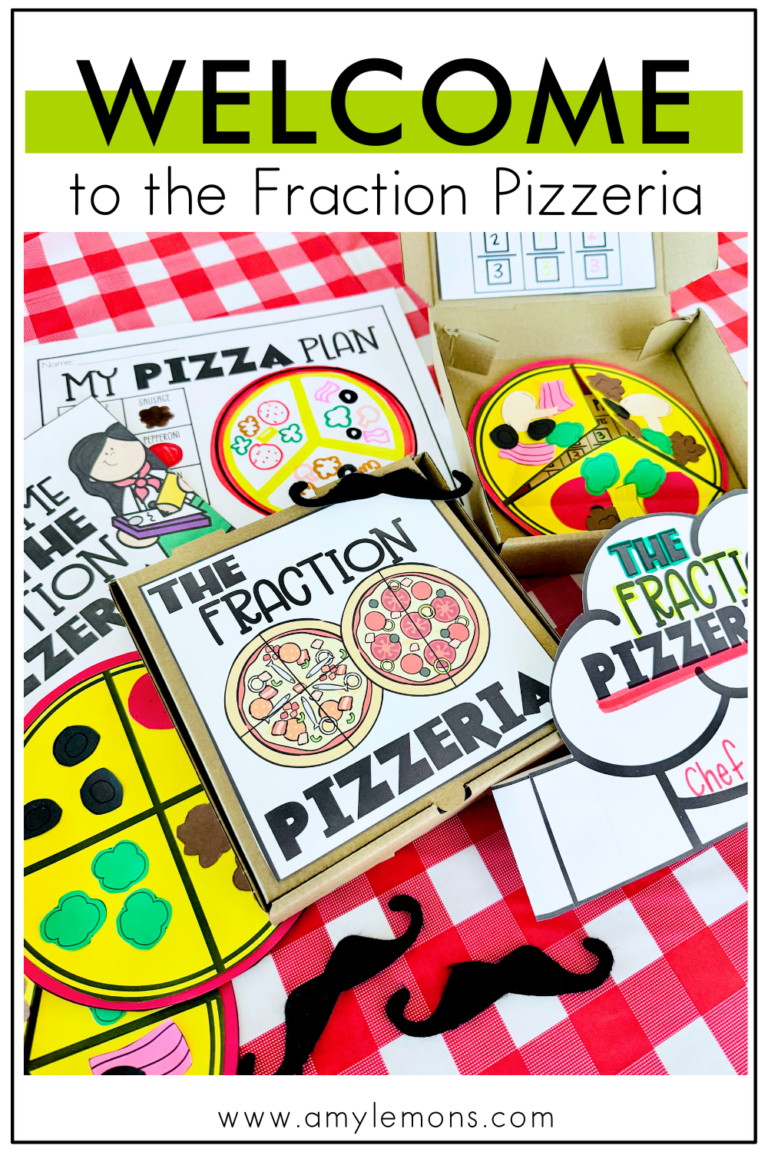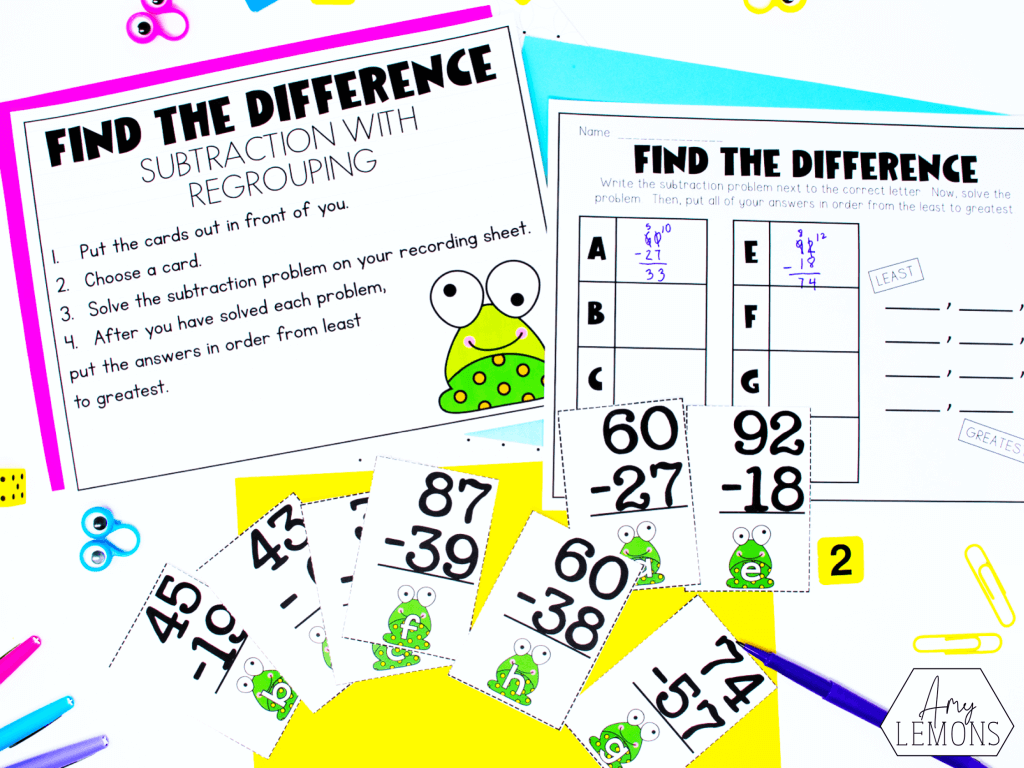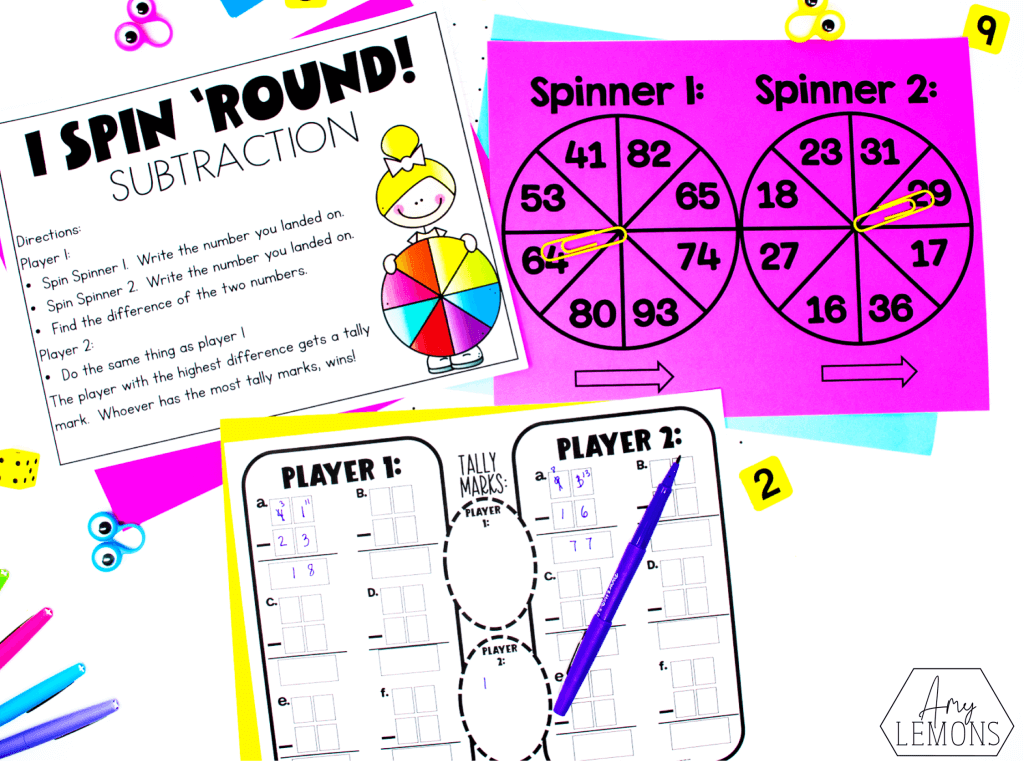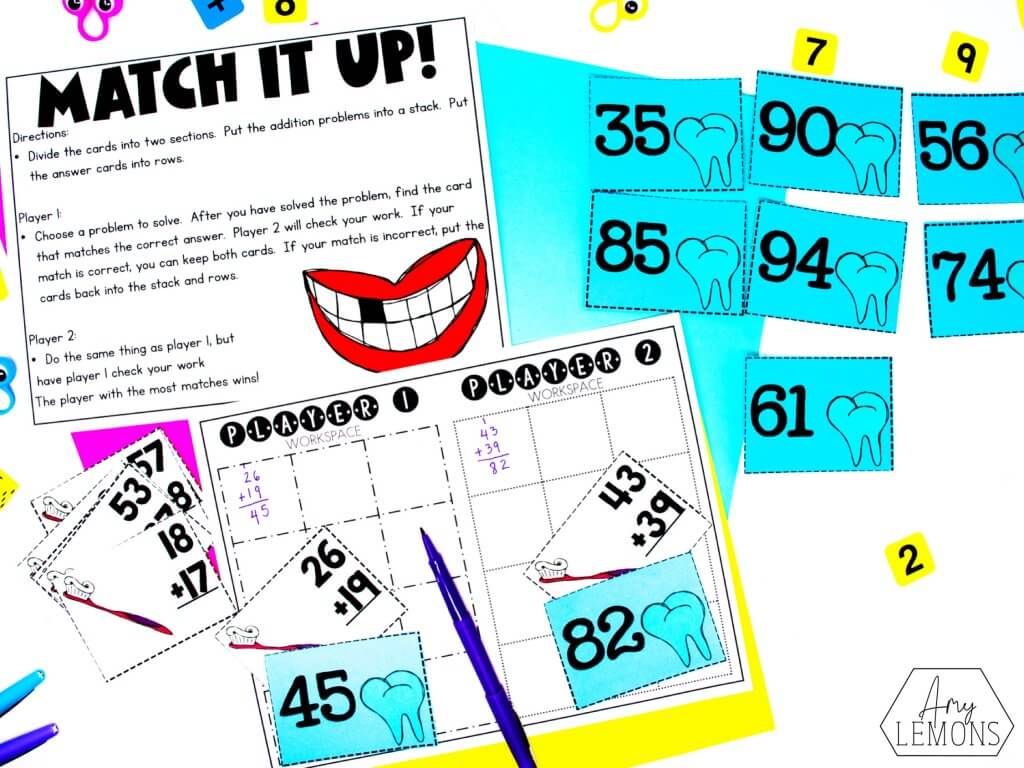

When it comes to math stations in the classroom, you want to get the most bang for your buck. You definitely don’t want to put in the time and energy for little return. Centers are a great way for students to practice skills that you are working on in the classroom as well as spiral skills previously taught. It also gives the teacher an opportunity to work with students either one on one or through small groups. With all of that being said, I want to share 5 ideas to help you get the most use of your math stations, specifically when it comes to centers that involve addition and subtraction with regrouping.
If you want to jump straight to the centers, click below!
As teachers, I think we often times overthink differentiation. We’ve head the term used a lot, and we want to provide the best opportunities for our students. When I think of differentiation, I try to think of how can I easily differentiate without costing myself a lot of extra time or energy.
Dice activities lend themselves very well to differentiation. How so?! Now that we have many different types of dice available to us, we can easily just swap out a 6-sided die for a 9-sided die. This changes the level of problem, thus giving students who are ready for it, a more challenging math problem to solve. THESE are my favorite dice. There are so many kinds that can be used during math stations. I purchased the set back in 2014 and have been using them ever since!

My next step is one that I say many many times, but I never grow weary of saying it! Keep things simple. Students often get distracted or restless if there are too many problems to solve. They may rush through to get finished and start making silly mistakes. Keeping the number of problems to solve to a minimum will help students stay focused and on task. Here you can see that students solve 8 subtraction with regrouping problems. Then, they order the differences from least to greatest. 8 problems are definitely enough to know if the student has mastered the skill or not.

This next idea doesn’t have to be extravagant or time consuming either. Try adding an element of fun to your math stations. This can be as simple as the students rolling dice or spinning a spinner. Maybe they solve in a colored marker or write on their desks with a dry erase marker. Changing things up occasionally will keep students interested and focused. Often times I use paper clips as spinners, but I also like to keep THESE transparent spinners on hand.

Do your students work independently or together during math stations? I always have my students at least work in partners. This helps limit the amount of stations that I have to prep, but it also provides accountability within a station. Now is this always perfect where students get along, don’t goof off, and stay on task? Of course not, but having clear expectations and procedures set up in advance definitely helps to minimize the issues. For the station below students are checking each other’s work so that they aren’t completely disengaged when it isn’t their turn.

This last idea is what will get you the most bang for your buck during math stations. Incorporating multiple skills allows your students to practice and review the most current math content while also spiraling previously taught skills. I think many times we think that we need an addition station, a place value station, a graphing station, etc. But the truth is that you can combine skills so that students are hitting multiple things at once. In Solve and Compare, students solve a subtraction with regrouping problem. Then they compare the answers to 50. Students sort the differences by less than or greater than 50.

Don’t want to forget about these math stations tips and FREEBIE? Save this image to Pinterest and come back to it later!


Hey, y’all! My name is Amy Lemons and I am passionate about providing students with both engaging and effective standards-based Math and ELA lessons.

Sample a day of Rooted in Reading with these lesson plans and activities for Reading Comprehension, Vocabulary, and Grammar!